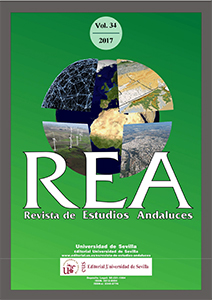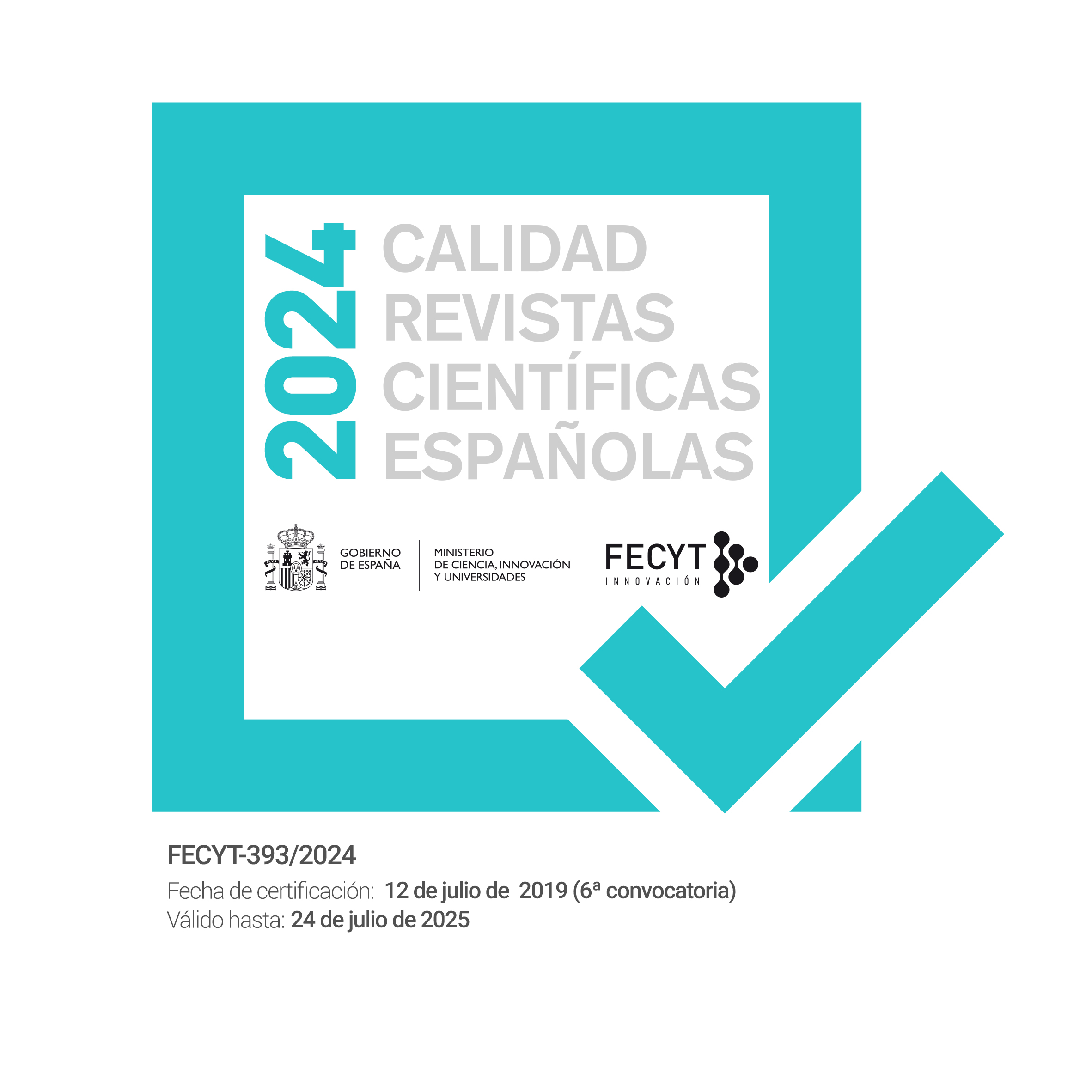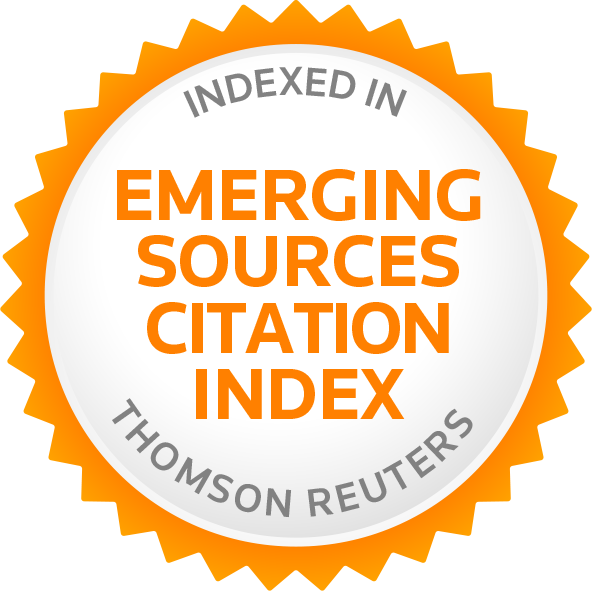La Economía Sumergida en Tiempos de Crisis: Un Análisis del Trabajo no Declarado en Europa.
DOI:
https://doi.org/10.12795/rea.2017.i34.16Palabras clave:
Economía sumergida, trabajo no declarado, UE-28, Eurobarómetro, Heckman, ProbitResumen
Este estudio analiza el trabajo no declarado como pieza fundamental en la economía sumergida en la UE-28, haciendo especial énfasis en su cuantificación y evolución, estructura, variabilidad por países y determinantes. Con este objetivo, se aplican métodos de regresión lineal y modelos de elección discreta con variable dependiente binaria sobre la base de los microdatos correspondientes a los Eurobarómetros especiales dedicados al análisis del fenómeno del trabajo no declarado en los años 2007 y 2013. Los resultados muestran la importancia que tienen sobre el trabajo no declarado (i) el grado de aceptación individual del propio fenómeno; (ii) la percepción del riesgo de sanciones; (iii) la situación laboral del sujeto; y (iv) la propia situación macroeconómica. Las implicaciones de estos resultados para el espectro de políticas disponibles para combatir la economía sumergida son también discutidas en este trabajo.
Descargas
Citas
Ahumada, H., Alvaredo, F. and Canavese, A. (2008). The monetary method to measure the shadow economy: the forgotten problem of the initial conditions. Economics Letters 101(2), 97–99. https://doi.org/10.1016/j.econlet.2008.06.001
Aigner, D., Schneider, F. and Ghosh, D. (1988). Me and my shadow: estimating the size of the US hidden economy from time series data”, in Barnett, W.A.; Berndt, E.R. and White, H. (Eds) Dynamic Econometric Modeling (pp. 224-243). Cambridge: Cambridge University Press. https://doi.org/10.1017/cbo9780511664342.015
Alm, J., Sanchez, I. and De Juan, A. (1995). Economic and non-economic factors in tax compliance. Kyklos 48(1), 3-18. https://doi.org/10.1111/j.1467-6435.1995.tb02312.x
Alm, J. and Torgler, B. (2006). Culture differences and tax morale in the United States and in Europe. Journal of Economic Psychology 27(2), 224-246.
https://doi.org/10.1016/j.joep.2005.09.002
Amendola, A. and Dell’Anno, R. (2010). Institutions and human development in the Latin America shadow economy. Estudios en Derecho y Gobierno 3(1), 9-25.
Andreoni, J., Erard, B. and Feinstein, J. (1998). Tax compliance. Journal of Economic Literature 36(4), 818-860.
Arrazola, M., Hevia, J., Mauleón, I. y Sánchez, R. (2011). Estimación del volumen de economía sumergida en España. Cuadernos de Información Económica 220, 81-88.
Asea, P.K. (1996). The informal sector: baby or bath water? Carnegie-Rochester Conference Series on Public Policy 45, 163-171.
https://doi.org/10.1016/S0167-2231(96)00022-X
Bajada, C. and F. Schneider (2009). Unemployment and the shadow economy in the OECD. Review Economique 60(4), 1011-1033. https://doi.org/10.3917/reco.605.1033
Battiston, P., Duncan, D., Gamba, S. and Santoro, A. (2016). Audit publicity and tax compliance: a quasi-natural experiment. LEM Working Paper Series 2016/40. Pisa: Institute of Economics, Scuola Superiore Sant'Anna.
Bhattacharyya, D.K. (1999). On the Economic Rationale of Estimating the Hidden Economy. Economic Journal 109(456), 348-359.
https://doi.org/10.1111/1468-0297.00438
Boeschoten, W.C. and Fase, M.M.G. (1984). The Volume of Payments and the Informal Economy in the Netherlands 1965-1982. M. Nijhoff, Dordrecht, 76p.
Buehn, A. and Schneider, F. (2012). Shadow economies around the world: novel insights, accepted knowledge, and new estimates. International Tax and Public Finance 19(1), 139-171. https://doi.org/10.1007/s10797-011-9187-7
Cagan, P. (1958). The demand for currency relative to the total money supply. Journal of Political Economy 66(3), 302-328. https://doi.org/10.1086/258056
Clotfelter, C.T. (1983). Tax evasion and tax rates: an analysis of individual return. Review of Economics and Statistics 65(3), 363-73.
https://doi.org/10.2307/1924181
Collins, C.C. (2005). The undeclared sector, self-employment and public policy. International Journal of Entrepreneurial Behaviour and Research 11(4), 244-257.
https://doi.org/10.1108/13552550510603289
Comisión Europea (2007). Undeclared Work in the European Union. Special Eurobarometer 284.
Comisión Europea (2014). Undeclared Work in the European Union. Special Eurobarometer 402.
Contini, B. (1981). Labor market segmentation and the development of the parallel economy – the Italian experience. Oxford Economic Papers 33(4), 401-412.
Contini, B. (1982). The Second Economy of Italy. In Tanzi, V. (Ed) The Underground Economy in the United States and Abroad (pp. 131-159). D.C. Heath, Lexington.
https://doi.org/10.1093/oxfordjournals.oep.a041515
Dallago, B. (1990). The Irregular Economy: The ‘Underground Economy’ and the ‘Black Labor Market’. Dartmouth, U.K.: Publishing Co, 224p.
Del Boca, D. (1981). Parallel economy and allocation of time. Micros: Quarterly Journal of Micro- economics 4(2), 13-18.
Del Boca, D. and Forte, F. (1982). Recent empirical surveys and theoretical interpretations of the parallel economy in Italy. In Tanzi, V. (Ed) The Underground Economy in the United States and Abroad (pp. 160-178). Lexington. D.C. Heath.
Dell’Anno, R. (2007). The shadow economy in Portugal: an analysis with the MIMIC approach. Journal of Applied Economics 10(2), 253-277.
Dell’Anno, R., Gómez-Antonio, M. and Pardo, A. (2007). The shadow economy in three mediterranean countries: France, Spain and Greece. A MIMIC approach, Empirical Economics 33(1), 51-84. https://doi.org/10.1007/s00181-006-0084-3
Dreher, A., Kotsogiannis, C. and McCorriston, S. (2009). How do institutions affect corruption and the shadow economy? International Tax and Public Finance 16(4), 773-796. https://doi.org/10.1007/s10797-008-9089-5
Dreher, A. and Schneider, F. (2010). Corruption and the shadow economy: an empirical analysis. Public Choice 144(2), 215-277. https://doi.org/10.1007/s11127-009-9513-0
Evans, M., Syrett, S. and Williams, C.C. (2006). Informal Economic Activities and Deprived Neighbourhoods. London: Department of Communities and Local Government, 113p.
Feige, E.L. (1979). How big is the irregular economy? Challenge 22(1), 5-13.
https://doi.org/10.1080/05775132.1979.11470559
Feige, E.L. (1986). A re-examination of the ‘under-ground economy’ in the United States. International Monetary Fund Staff Papers, 33(4), 768-781.
https://doi.org/10.2307/3867216
Feige, E.L. (1996). Overseas holdings of U.S. Currency and the underground economy. In Pozo, S. (Ed) Exploring the Underground Economy (pp. 5-62). Michigan. W.E. Upjohn Institute for Employment Research. https://doi.org/10.17848/9780880994279.ch2
Feld, L.P. and Larsen, C. (2012). Undeclared Work, Deterrence and Social Norms. The Case of Germany. Berlin: Springer, 112p. https://doi.org/10.1007/978-3-540-87401-0
Feld, L.P. and Schneider, F. (2010). Survey on the shadow economy and undeclared earnings in OECD countries. German Economic Review 11(2), 109-149.
https://doi.org/10.1111/j.1468-0475.2010.00509.x
Feld, L.P. and Frey, B.S. (2007). Tax compliance as the result of a psychological tax contract: The role of incentives and responsive regulation. Law and Policy 29(1), 102-120. https://doi.org/10.1111/j.1467-9930.2007.00248.x
Ferraro, F.J., Campayo, C., Rubio, C.M. y Millán, C.M. (2002). La Economía Sumergida en Andalucía. Sevilla: Consejo Económico y Social de Andalucía, 161p.
Fichtenbaum, R. (1989). The productivity slowdown and the underground economy. Quarterly Journal of Business Economics 28(3), 78-90.
Fleming, M.H., Roman, J. and Farrell, G. (2000). The shadow economy. Journal of International Affairs 53(2), 387-409.
Frey, B.S. and Pommerehne, W. (1984). The hidden economy: state and prospect for measurement. Review of Income and Wealth 30(1), 1-23.
https://doi.org/10.1111/j.1475-4991.1984.tb00474.x
Frey, B.S. and Weck-Hannemann, H. (1983a). Bureaucracy and the shadow economy: a macro-approach. In Hanusch, H. (Ed) Anatomy of Government Deficiencies (pp. 89-109). Berlin: Springer. https://doi.org/10.1007/978-3-662-21610-1_6
Frey, B.S. and Weck-Hannemann, H. (1983b). Estimating the shadow economy: a ‘naïve’ approach. Oxford Economic Papers 35(1), 23-44.
https://doi.org/10.1093/oxfordjournals.oep.a041582
Frey B.S. and Weck-Hannemann H. (1984). The hidden economy as an ‘unobservable’ variable. European Economic Review 26(1), 33-53.
https://doi.org/10.1016/0014-2921(84)90020-5
Friedman, E., Johnson, S., Kaufmann, D. and Zoido-Lobatón, P. (2000). Dodging the grabbing hand: the determinants of unofficial activity in 69 countries. Journal of Public Economics 76(4), 459-493. https://doi.org/10.1016/S0047-2727(99)00093-6
Gadea, M.D. and Serrano-Sanz, J.M. (2002). The hidden economy in Spain - A monetary estimation. Empirical Economics 27(3), 499-527.
https://doi.org/10.1007/s001810100093
Galindo Calvo, P. (2006). Las complejidades del desarrollo socioeconómico en el caso de Andalucía. Revista de Estudios Andaluces 26, 13-35.
Gallin, D. (2001). Propositions on trade unions and informal employment in time of globalization. Antipode 19(4), 531-549. https://doi.org/10.1111/1467-8330.00197
Gavira, L. (1996). Las teorías sobre el mercado de trabajo y el problema de la inmigración en Europa: una aproximación. Revista de Estudios Andaluces 22, 83-98.
Giachi, S. (2014). Dimensiones sociales del fraude fiscal: confianza y moral fiscal en la España contemporánea. Revista Española de Investigaciones Sociológicas 145(1), 73-98.
Giles, D.E.A. (1999a). Measuring the hidden economy: implications for econometric modelling. Economic Journal 109(456), 370-380.
https://doi.org/10.1111/1468-0297.00440
Giles, D.E.A. (1999b). Modelling the shadow economy and the tax-gap in New Zealand. Empirical Economics 24(4), 621-640. https://doi.org/10.1007/s001810050076
Giles, D.E.A., Tedds, L.M. and Werkneh, G. (2002). The Canadian underground and measured economies. Applied Economics 34(18), 2347-2352.
https://doi.org/10.1080/00036840210148021
Goel, R.K., Saunoris, J.W. and Schneider, F. (2017). Growth in the shadows: effect of the shadow economy on U.S. economic growth over more than a century. IZA Discussion Paper Series No. 10705, IZA Institute of Labour Economics.
Gómez de Antonio, M. y Alañón Pardo, A. (2004). Evaluación y análisis espacial del grado de incumplimiento fiscal para las provincias españolas (1980-2000). Hacienda Pública Española 171(4), 9-32.
González-Fernández, M. and González-Velasco, M.C. (2014). Shadow economy, corruption and public debt in Spain. Journal of Policy Modeling 36(6), 1101-1117.
https://doi.org/10.1016/j.jpolmod.2014.10.001
González-Fernández, M. and González-Velasco, M.C. (2015). Analysis of the shadow economy in the Spanish regions. Journal of Policy Modeling 37(6), 1049-1064.
https://doi.org/10.1016/j.jpolmod.2015.09.006
Grabiner, L. (2000). The Informal Economy. London: HM Treasury, 43p.
Gutmann, P.M. (1977). The subterranean economy. Financial Analysts Journal 34(1), 24-27. https://doi.org/10.2469/faj.v33.n6.26
Haigner, S., Jenewein, S., Schneider F. and Wakolbinger, F. (2013). Driving forces of informal labour supply and demand in Germany. International Labour Review 152(3-4), 507-524. https://doi.org/10.1111/j.1564-913X.2013.00191.x
Heckman, J.J. (1977). Sample selection bias as a specification error (with an application to the estimation of labor supply functions). NBER Working Paper No. 172, National Bureau of Economic Research, EE.UU.
Helberger, C. and Knepel, H. (1988). How big is the shadow economy? A re-analysis of the unobserved-variable approach of B.S. Frey and H. Weck-Hannemann. European Economic Review 32(4), 965-976. https://doi.org/10.1016/0014-2921(88)90055-4
Hill, R. and Kabir, M. (1996). Tax rates, the tax mix, and the growth of the underground economy in Canada: what can we infer? Canadian Tax Journal / Revue Fiscale Canadienne 44(6), 1552-1583.
Hofstede, G. (2003). Culture's Consequences: Comparing Values, Behaviors, Institutions and Organizations across Nations, 2nd ed. Sage Publishing, 616p.
Houston, J.F. (1987). Estimating the size and implications of the underground economy. Working paper 87-9, Federal Reserve Bank of Philadelphia.
Imamoglu, H. (2016). Re-estimation of the size of underground economy in European countries: MIMIC Approach. International Journal of Economic Perspectives 10(1), 171-193.
Isachsen, A.J. and S. Strøm, S. (1985). The size and growth of the hidden economy in Norway. Review of Income and Wealth 31(1), 21-38.
https://doi.org/10.1111/j.1475-4991.1985.tb00496.x
Isachsen, A.J.; Klovland, J., and Strøm, S. (1982). The hidden economy in Norway, in Tanzi, V. (Ed) The Underground Economy in the United States and Abroad (pp. 209-231). D.C. Heath, Lexington.
Jiménez-Fernández, A. y Martínez-Pardo del Valle, R. (2013). La economía sumergida en España. Documento de Trabajo Nº. 4, Fundación de Estudios Financieros.
Johnson, S.; Kaufmann, D. and Shleifer, A. (1997). The unofficial economy in transition. Brookings Papers on Economic Activity 0(2), 159-221.
https://doi.org/10.2307/2534688
Johnson, S.; Kaufmann, D. and Zoido-Lobaton, P. (1998). Regulatory discretion and the unofficial Economy. American Economic Review 88(2), 387-392.
Kaufmann, D. and Kaliberda, A. (1996). Integrating the unofficial economy into the dynamics of post socialist economies: A framework of analyses and evidence. Policy Research Working Paper 1691, World Bank.
Kirchler, E. (2007). The Economic Psychology of Tax Behaviour. Cambridge: Cambridge University Press, 264p. https://doi.org/10.1017/cbo9780511628238
Klaric, V. (2011). Estimating the size of non-observed economy in Croatia using the MIMIC approach. Financial Theory and Practice 35(1), 59-90.
Kluge, J.N., and Libman, A. (2017). Sticks or carrots? Comparing effectiveness of government shadow economy policies in Russia. IOS Working Papers No. 364, Institute of East and Southeast European Studies, Regensburg.
Kucera, D. and Roncolato, L. (2008). Informal employment: two contested policy issues. International Labor Review 147(3), 321-348.
https://doi.org/10.1111/j.1564-913X.2008.00039.x
Lacko, M. (1996). Hidden economy in east-European countries in international Comparison. International Institute for Applied Systems Analysis (IIASA) working paper, Laxenburg.
Lacko, M. (1997). Do power consumption data tell the story? Electricity intensity and the hidden economy in post-Socialist countries. International Institute for Applied Systems Analysis (IIASA) working paper, Laxenburg.
Lacko, M. (1998). The hidden economies of Visegrad countries in international comparison: a household electricity approach. In Halpern, L. and Wyplosz, C. (Eds) Hungary: Towards a Market Economy, pp. 128-152. Cambridge: MA. Cambridge University Press.
Langfeldt, E. (1984). The unobserved economy in the Federal Republic of Germany. In Feige, E.L (Ed) The Unobserved Economy, pp. 236-260. Cambridge. Cambridge University Press.
Loayza, N.V. (1996). The economics of the informal sector: a simple model and some empirical evidence from Latin America. Carnegie-Rochester Conference Series on Public Policy 45, 129-162. https://doi.org/10.1016/S0167-2231(96)00021-8
MacAfee, K. (1980). A Glimpse of the hidden economy in the national accounts. Economic Trends 136, 81-87.
Martín Díaz, E. (1995). Inmigrantes en Andalucía: Algunas claves para su estudio desde la antropología cultural. Revista de Estudios Andaluces 21, 33-46.
Mauleón, I. y Escobedo, M.I. (1991). Demanda de dinero y economía sumergida. Hacienda Pública Española 119, 105-122.
Mauleón, I. y Sardà. J. (1997). Estimación cuantitativa de la economía sumergida en España. Ekonomiaz 39, 125-135.
Mascagni, G.; Nell, C. and Monkam, N. (2017). One size does not fit all: a field experiment on the drivers of tax compliance and delivery methods in Rwanda. ICTD Working Paper 58, Institute of Development Studies, Brighton.
Mazzolini, G., Pagani, L. and Santoro, A. (2017). The deterrence effect of real-world operational tax audits. DEMS Working Paper Series No. 359, Department of Economics, Management and Statistics, University of Milano-Bicocca.
Millán, A., Millán, J.M. and Román, C. (2016). The role of start-up incentives on entrepreneurship dynamics in a post-crisis era: evidence from European countries. CESifo DICE Report: Journal for Institutional Comparisons 14(3), 29-35.
Millán, A., Millán, J.M., Román, C. and Van Stel, A. (2013). How does employment protection legislation influence hiring and firing decisions by the smallest firms? Economics Letters 121(3), 444-448. https://doi.org/10.1016/j.econlet.2013.09.021
Mogensen, G.V., Kvist, H.K., Körmendi, E. and Pedersen, S. (1995). The shadow economy in Denmark 1994: measurement and results. Copenhagen: The Rockwool Foundation Research Unit.
Moltó, M.A. (1980). La economía irregular. Una primera aproximación al caso español. Revista Española de Economía 10(3), 33-52.
OCDE (2002). Measuring the non-observed economy: a handbook, OECD Publications Service.
O'Higgins, M. (1989). Assessing the under-ground economy in the United Kingdom. In Feige, E.L (Ed) The Underground Economies: Tax Evasion and Information Distortion, pp. 175-195. Cambridge. Cambridge University Press.
https://doi.org/10.1017/CBO9780511571749.009
Park, T. (1979). Reconciliation between Personal Income and Taxable Income (1947–1977). Washington, DC.: Bureau of Economic Analysis.
Petersen, HG. (1982). Size of the public sector, economic growth and the informal economy: development trends in the Federal Republic of Germany. Review of Income and Wealth 28(2), 191-215. https://doi.org/10.1111/j.1475-4991.1982.tb00612.x
Pedersen, S. (2003). The shadow economy in Germany, Great Britain and Scandinavia: a measurement based on questionnaire service. Copenhagen: The Rockwool Foundation Research Unit.
Pickhardt, M. and Sardà, J. (2011). The size of the underground economy in Germany: a correction of the record and new evidence from the modified-cash-deposit-ratio approach. European Journal of Law and Economics 32(1), 143-163.
https://doi.org/10.1007/s10657-010-9186-7
Pickhardt, M. and Sardà, J. (2015). Size and causes of the underground economy in Spain: a correction of the record and new evidence from the MCDR approach. European Journal of Law and Economics 39(2), 403-429.
https://doi.org/10.1007/s10657-013-9431-y
Portes, A. (1994). When more can be less: labor standards, development, and the informal economy, in Rakowski, C.A. (Ed) Contrapunto: the Informal Sector Debate in Latin America (pp. 113-129). Albany, NY. State University of New York Press.
Portes, A. (1996). The informal economy. In Pozo, S. (Ed) Exploring the Underground Economy, pp. 147-165. Michigan. W.E. Upjohn Institute for Employment Research.
https://doi.org/10.17848/9780880994279.ch7
Portes, A. and Haller, W. (2005). The informal economy. In Smelser, N.J. and Swedberg, R. (Eds) The Handbook of Economic Sociology, 2nd ed., pp. 403-425. Princeton, N.J: Princeton University Press and Russell Sage Foundation.
Portillo Navarro, M.J., Ortiz García, P. y Morales González, F. (2017). Fraude fiscal, turismo y economía sumergida en España. Un análisis por CCAA. Revista de Estudios Regionales 108, 101-123.
Prado-Domínguez, J. (2004). Una estimación de la economía informal en España, según un enfoque monetario, 1964-2001. El Trimestre Económico 41(282), 417-452.
Riahi-Belkaoui, A. (2004). Relationship between tax compliance internationally and selected determinants of tax morale. Journal of International Accounting, Auditing and Taxation 13(2), 135-143. https://doi.org/10.1016/j.intaccaudtax.2004.09.001
Richardson, G. (2006). Determinants of tax evasion: a cross-country investigation. Journal of International Accounting, Auditing and Taxation 15(2), 150-169.
Román, C., Congregado, E. and Millán, J.M. (2013). Start-up incentives: entrepreneurship policy or active labour market programme? Journal of Business Venturing 28(1), 151-175. https://doi.org/10.1016/j.jbusvent.2012.01.004
Román, C.; Congregado, E. and Millán, J.M. (2011). Dependent self-employment as a way to evade employment protection legislation. Small Business Economics 37(3), 363-392. https://doi.org/10.1007/s11187-009-9241-3
Sardà, J. (2014). La economía sumergida pasa factura. El avance del fraude en España durante la crisis. Técnicos del Ministerio de Hacienda (Gestha) y Universitat Rovira i Virgili.
Schneider, F. (1994). Can the shadow economy be reduced through major tax reforms? An empirical investigation for Austria. Public Finance 49, 137-152.
Schneider, F. (1997). The shadow economies of Western Europe. Economic Affairs 17(3), 42-48. https://doi.org/10.1111/1468-0270.00041
Schneider, F. (2005). Shadow economies around the world: what do we really know? European Journal of Political Economy 21(3), 598-642.
https://doi.org/10.1016/j.ejpoleco.2004.10.002
Schneider, F. (2008). The shadow economy in Germany: a blessing or a curse for the official economy? Economic Analysis and Policy 38(1), 89-111.
https://doi.org/10.1016/S0313-5926(08)50008-7
Schneider, F. (2010). The Influence of public institutions on the shadow economy: an empirical investigation for OECD countries. European Journal of Law and Economics 6(3), 441-468. https://doi.org/10.2202/1555-5879.1542
Schneider, F. (2013). The shadow economy in Europe, 2013. A.T. Kerney, VISA, Johannes Kepler Universität Linz.
Schneider, F. (2015). Size and development of the shadow economy of 31 European and 5 other OECD Countries from 2003 to 2015: different developments. Johannes Kepler Universität, Linz.
Schneider, F. (2016a). Estimating the size of the shadow economies of highly-developed countries: selected new results. CESifo DICE Report: Journal for Institutional Comparisons 14(4), 44-53.
Schneider, F. (2016b). Estimating the size of the shadow economy: methods, problems and open questions. Turkish Economic Review 3(2), 256, 280.
Schneider, F. and Enste, D.H. (2000). Shadow economies: size, causes, and consequences. Journal of Economic Literature 38(1), 77-114.
https://doi.org/10.1257/jel.38.1.77
Schneider, F. and Williams, C.C. (2013). The Shadow Economy. London: Institute of Economic Affairs, 96p. https://doi.org/10.1017/cbo9781139542289
Simon, C.P. and Witte, D.A. (1982). Beating the System: The Underground Economy. Boston: Urban House, 310p.
Smith, J.D. (1985). Market motives in the informal economy.In Gaertner, W. and Wenig, A. (Eds) The Economics of the Shadow Economy, pp. 161-177. Berlin: Springer.
https://doi.org/10.1007/978-3-642-88408-5_10
Tanzi, V. (1980). The underground economy in the United States: estimates and implications. Banca Nazionale del Lavoro 135(4), 427-453.
Tanzi, V. (1982). A second (and more skeptical) look at the underground economy in the United States. In Tanzi, V. (Ed) The Underground Economy in the United States and Abroad, pp. 38-56. D.C. Heath, Lexington.
Tanzi, V. (1983). The underground economy in the United States: annual estimates, 1930-1980. International Monetary Fund Staff Papers, 30(2), 283-305.
https://doi.org/10.2307/3867001
Tanzi, V. (1986). The underground economy in the United States. Reply to comments by Feige, Thomas, and Zilberfarb. International Monetary Fund Staff Papers, 33(4), 799-811. https://doi.org/10.2307/3867219
Tanzi, V. (1999). Uses and abuses of estimates of the underground economy. Economic Journal 109(3), 338-347. https://doi.org/10.1111/1468-0297.00437
Tedds, L.M. and Giles, D.E.A. (2000). Modelling the underground economies in Canada and New Zealand: a comparative analysis, Econometrics Working Paper EWP0003, Department of Economics, University of Victori.
Teobaldelli, D. (2011). Federalism and the shadow economy. Public Choice 146(3-4), 269-269.
Teobaldelli, D. and Schneider, F. (2012). Beyond the veil of ignorance: the influence of direct democracy on the shadow economy. CESifo Working Paper MO3749, University of Munich, Munich. https://doi.org/10.1007/s11127-009-9590-0
Thomas, J.J. (1986). The underground economy in the United States: a comment on Tanzi. International Monetary Fund Staff Papers 33(4), 782-789.
https://doi.org/10.2307/3867217
Thomas, J.J. (1992). Informal Economic Activity. LSE Handbooks in Economics. London: Harvester Wheatsheaf, 529p.
Thomas, J.J. (1999). Quantifying the black economy: ‘measurement without theory’ yet again?. Economic Journal 109(456), 381-89. https://doi.org/10.1111/1468-0297.00441
Torgler, B. and Schneider, F. (2009). The impact of tax morale and institutional quality on the shadow economy. Journal of Economic Psychology 30(2), 228-245.
https://doi.org/10.1016/j.joep.2008.08.004
Van Eck, R. and Kazemier, B. (1988). Features of the hidden economy in the Netherlands. Review of Income and Wealth 34(3), 251-273.
https://doi.org/10.1111/j.1475-4991.1988.tb00570.x
Vaquero García, A., Lago Peñas, S. and Fernández Leiceaga, X. (2015). Economía sumergida y fraude fiscal en España. ¿Qué es lo que sabemos? Documento de Trabajo nº 768, Fundación de Cajas de Ahorros – FUNCAS.
Webb, J.W., Bruton, G.D., Tihanyi, L. and Ireland, R.D. (2013). Research on entrepreneurship in the informal economy: framing a research agenda. Journal of Business Venturing 28(5), 598-614. https://doi.org/10.1016/j.jbusvent.2012.05.003
Williams, C.C. (2005). The undeclared sector, self-employment and public policy. International Journal of Entrepreneurial Behavior and Research 11(4), 244-257.
https://doi.org/10.1108/13552550510603289
Williams, C.C. (2008). Cross-national variations in undeclared work: results from a survey of 27 European countries. International Journal of Economic Perspectives 2(2), 46-63. https://doi.org/10.2139/ssrn.2290065
Williams, C.C. (2009a). Tackling undeclared work in Europe: lessons from a 27-nation survey. Policy Studies 30(2), 143-162. https://doi.org/10.1080/01442870902723667
Williams, C.C. (2009b). Formal and informal employment in Europe: beyond dualistic representations. European Urban and Regional Studies 16(2), 147-159.
https://doi.org/10.1177/0969776408101686
Williams, C.C. (2013). Evaluating cross-national variations in the extent and nature of informal employment in the European Union. Industrial Relations Journal 44(5-6), 479-494. https://doi.org/10.1111/irj.12030
Williams, C.C. and Franic, J. (2015). Tackling the propensity towards undeclared work: some policy lessons from Croatia. South East European Journal of Economics and Business 10(1), 18-31.
Williams, C.C. and Lansky, M.A. (2013). Informal employment in developed and developing economies: perspectives and policy responses. International Labour Review 152(3-4), 355-380. https://doi.org/10.1111/j.1564-913X.2013.00196.x
Williams, C.C. and Nadin, S. (2012). Tackling the hidden enterprise culture: government policies to support the formalization of informal entrepreneurship. Entrepreneurship and Regional Development 24(9-10), 895-915.
https://doi.org/10.1080/08985626.2012.742325
Williams, C.C. and Padmore, J. (2013). Envelope wages’ in the European Union. International Labour Review 152 (3-4), 411-430.
https://doi.org/10.1111/j.1564-913X.2013.00186.x
Williams, C.C. and Rodgers, P. (2013). The Role of Informal Economies in the Post-Soviet World: The End of Transition? London: Routledge Publishing Company, 244p.
Williams, C.C. and Schneider, F. (2016). Measuring the Global Shadow Economy: The Prevalence of Informal Work and Labour. Edward Elgar Publising Limited, Cheltenham, 256p. https://doi.org/10.4337/9781784717995
Williams, C.C. and Windebank, J. (1995). Black market work in the European Community: peripheral work for peripheral localities? International Journal of Urban and Regional Research 19(1), 23-39.
https://doi.org/10.1111/j.1468-2427.1995.tb00488.x
Williams, C.C., Franic, J. and Dzhekova, R. (2014). Explaining the undeclared economy in Bulgaria: an institutional asymmetry perspective. South East European Journal of Economics and Business 9(2), 33-45.
Descargas
Publicado
Cómo citar
Número
Sección
Licencia
La edición electrónica de la Revista de Estudios Andaluces se ofrece en acceso abierto desde el número 28 publicado en 2011 hasta la actualidad. Las ediciones impresa y electrónica de esta Revista son editadas por la Editorial de la Universidad de Sevilla, siendo necesario citar la procedencia en cualquier reproducción parcial o total.
La Revista de Estudios Andaluces no cobra tasas por el envío de trabajos, ni tampoco cuotas por la publicación de sus artículos. La Revista es gratuita desde el momento de la publicación de cada número y sus contenidos se distribuyen con la licencia “CreativeCommons Atribución-NoComercial-SinDerivar 4.0 Internacional” , que permite al usuario de la Revista de Estudios Andaluces criterios que cumplen con la definición de open access de la Declaración de Budapest en favor del acceso abierto. Puede consultar desde aquí la versión informativa y el texto legal de la licencia. Esta circunstancia ha de hacerse constar expresamente de esta forma cuando sea necesario.







